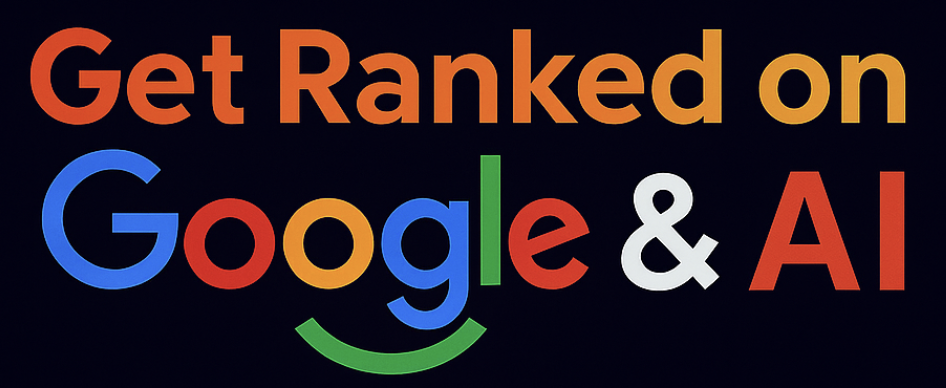Google Ads has evolved far beyond simple keyword targeting, and Performance Max Google Ads sits right at the centre of this transformation.
If you’ve been managing campaigns the traditional way like meticulously selecting keywords, manually adjusting bids, and hoping your message reaches the right person at the right time. You’re working harder than you need to.
Google Ads Performance Max throws open the doors to Google’s entire advertising ecosystem, letting machine learning do the heavy lifting whilst you focus on strategic direction.
The catch? You need to feed the system properly.
This guide shows you how to master the data, creative, and audience signals that make Google Performance Max campaigns truly effective for B2B businesses.
Table of Contents
Performance Max Decoded: What Google’s Automated Campaigns Actually Deliver
Think of Google Performance Max as your all-access pass to every advertising placement Google offers.
We’re talking Search, YouTube, Display, Gmail, Google Discover, and even Google Maps ads, all managed through one unified campaign type.
The system uses machine learning to determine where your ads appear, how much to bid, and which creative variations to show. The shift here is profound.
You’re no longer buying specific placements or keywords. You’re setting objectives, providing assets, and letting Google’s algorithms figure out the optimal path to your goals.
How It Differs from Traditional Campaigns
For B2B companies dealing with lengthy sales cycles and multiple decision-makers, this approach actually makes more sense than traditional methods.
Consider how your typical enterprise software purchase happens:
- The IT director searches for “cloud security solutions” on her lunch break
- The CFO watches YouTube tutorials about budget management tools in the evening
- The procurement manager checks Gmail for vendor comparisons
Traditional Google Ads campaigns force you to set up separate campaigns for each of these touchpoints. Google Performance Max ads follow the entire account through this non-linear journey, maintaining context across every interaction.
The B2B Growth Engine: Why You Can’t Afford to Ignore Performance Max Ads
B2B sales cycles are messy. A single deal involves multiple stakeholders researching at different times, asking different questions, and consuming different content formats.
Your graduate analyst might start with broad awareness searches whilst the senior director digs into detailed comparison content weeks later.
The Core Benefits of Performance Max
Performance Max campaigns handle this complexity natively.
The system recognises signals across devices and channels, building a profile of the buying committee rather than treating each search as an isolated event.
When your prospect moves from YouTube research to Gmail comparisons to final Search queries, PMax maintains the thread.The real benefits of Performance Max extend beyond simple reach.
You can train these max campaigns to prioritise leads that historically convert to revenue, using your CRM data to inform the algorithm’s decisions.
This means optimising for outcomes that actually matter to your business like closed deals, not just form fills.
Building Your Creative Arsenal for Maximum Reach
Performance Max campaigns demand creative abundance. The algorithm needs options to test across different placements and audience segments.
You can’t upload a single image and expect miracles.
What Your Asset Library Should Include
| Asset Type | Purpose | What to Include |
| Video | YouTube ads, product demos | Multiple variations for different personas |
| Images | Display placements | Square, landscape, and portrait formats |
| Text | Headlines and descriptions | 10-15 variations per persona |
Consider how Salesforce approaches this. They run Google Performance Max ad examples that range from broad awareness content about digital transformation to specific product demos for different industries.
Each asset group targets a different stage of the customer journey. Our video making and content marketing services help you build the creative depth PMax thrives on.
Structuring Asset Groups Strategically
The Asset Groups feature lets you segment creative by theme or audience. You might have:
- One group focused on cost savings for CFOs
- Another emphasising security for IT directors
- A third highlighting ease of implementation for operations managers
Looking at successful performance max ad examples from B2B companies, the pattern is clear: specificity wins.
Generic messaging gets lost. Tailored creative that speaks directly to personal pain points drives engagement.
Pair these campaigns with Facebook Ads and LinkedIn Ads to cover every stage of the B2B buying cycle
Guiding the Algorithm with Audience Signals
Audience signals are your way of giving the machine learning system helpful hints about who you’re trying to reach. These aren’t hard targeting parameters like traditional audience targeting options. Think of them more as a starting point for the algorithm’s exploration.
1. Custom Segments for Competitive Intelligence
Custom segments work brilliantly for offensive strategies. You can target people actively searching for your competitor names or specific industry research terms.
If you’re selling marketing automation software, you might create a segment of users searching for “HubSpot alternatives” or “Marketo pricing”.
2. In-Market Audiences for Purchase Intent
In-market audiences indicate purchase intent through recent search behaviors and site visits.
For B2B marketing, segments such as “Business Software Solutions” or “Cloud Services” are crucial.
Smart bidding excels here by enabling Target CPA goals focused on new customer acquisition, which directs budget towards building a new pipeline, thereby facilitating systematic entrance into new accounts through pmax ads.
3. Leveraging First-Party Data
Complement these signals with your first-party data through Customer Match. Upload your CRM lists to help PMax identify similar users across the Google Network.
The algorithm learns the characteristics of your best customers and finds more people like them.
This becomes particularly valuable when optimising Google Ads targeting for complex B2B buyer committees.
Optimising Performance Max for Real Business Outcomes
Most marketers make a critical mistake:
They optimise Google Ads Pmax for lead volume. They track Marketing Qualified Leads (MQLs) and celebrate when the numbers go up. Then they wonder why the sales team complains about lead quality.
The fix? Stop measuring vanity metrics. Start focusing on revenue.
a. The Revenue-First Approach
Smart marketers optimise PMax around outcomes that directly tie to revenue, not just form fills. This means importing conversion actions from your CRM that represent meaningful milestones:
- Lead Qualified
- Sales Accepted Lead
- Opportunity Created
- Deal Closed
By doing this, the algorithm learns which behaviours and conversion patterns actually predict deal success, so it stops wasting spend on leads that never convert.
b. Connecting the Dots with Analytics
Tighter Google Analytics integration makes Performance Max smarter. You can track:
- Which landing pages winning prospects visit
- How long they stay engaged
- What content they consume before requesting a demo
Using conversion value optimisation, you assign weighted values to actions (e.g., £10 for a whitepaper download vs. £500 for a demo request). This tells the algorithm how to allocate ad spend more profitably.
Stronger results come from complete funnel tracking. Our SEO services and Google Ads solutions connect the dots for you
Once you have enough conversion data, Target ROAS bidding kicks in: “I need £4 of revenue for every £1 spent.” Google’s system then adjusts bids in real time to maintain that ratio across placements.
c. Defensive Tactics: Protecting Your Budget
Optimisation it’s about protecting ad spend.
- Negative keywords: Exclude terms like free, jobs, open source, university to block non-buyers.
- Customer Match exclusions: Upload lists of employees, churned prospects, or low-quality leads to avoid wasted impressions.
- Channel performance monitoring: Watch for overspending on low-quality Display placements.
- Brand exclusions: Prevent competitor-focused ads from appearing on competitor-owned channels.
And remember: the six-week ramp-up period is real. Don’t panic in week two. Machine learning needs time to gather data and learn.
Advanced PMax Ad Signal Architecture for Complex B2B Cycles
Marketers have shifted roles. You are now a signal architect, shaping the data environment where Google’s AI makes decisions. The better the signals, the stronger the outcomes.
a. CRM as the Core Engine
A connected CRM feeds the system with accurate milestones. Sync data directly or import offline results so the campaign learns which leads turn into revenue, not just clicks.
b. Closing the Loop with Enhanced Conversions
Enhanced conversions link online leads with offline sales.
A captured email at form stage can later match with a closed deal, teaching the system which early behaviours point to real business wins.
c. Reading Device Behaviour
Decision-makers behave differently across devices. Some browse on tablets during commutes, others complete forms on desktops at work. Monitor these usage shifts to refine creative and content strategies.
d. Timing Still Counts
Automation handles bidding, but timing still matters. If late-night leads never progress, ease back spending in those hours and concentrate on times that produce real conversations.
Performance Max responds to signal strength.
Strong CRM integration, enhanced conversions, device insights, and thoughtful timing give the algorithm the clarity it needs to drive meaningful results in long B2B cycles.
5 Key PMax Strategies Every B2B Marketer Should Apply
Performance Max is about fuelling your pipeline with leads that actually convert into revenue.
To make it work in complex B2B environments, you’ll want to layer in strategies that address the realities of long sales cycles, multiple stakeholders, and high-value deals.
1. Sync Your CRM for Smarter Optimisation
Integrate Salesforce, HubSpot, or Microsoft Dynamics so Google Performance Max campaigns learn which leads progress to opportunities and deals.
Feeding offline conversion data back into Google Ads ensures the algorithm chases form fills that actually convert.
2. Build Persona-Based Asset Groups
Your CFO cares about cost control, your IT director about security, and your operations lead about speed. Create separate asset groups for each persona with tailored creative.
This way, Google Performance Max ad delivery matches the right message to the right stakeholder in the buying committee.
3. Use First-Party Data to Find Lookalike Accounts
Upload customer lists or high-value accounts into Customer Match. PMax analyses the traits of your best customers and finds similar prospects across Google’s channels.
This helps you expand into accounts that mirror your current wins.
4. Compare Performance with Other B2B Channels
B2B marketers often default to LinkedIn Ads for decision-maker targeting. Pairing PMax with LinkedIn lets you balance intent-driven search behaviour with role-based targeting.
Use channel attribution reporting to see which touchpoints are driving pipeline velocity.
5. Prioritise Pipeline Metrics Over Vanity Metrics
Clicks and MQLs aren’t the goal. Focus on cost per opportunity, pipeline influenced, and deal velocity. These tell you whether your PMax budget is fuelling real business growth.
Performance Max, Perfected: Tracking What Truly Matters
Campaign performance metrics need context. Your click-through rate means little if those clicks generate rubbish leads. Return on ad spend only matters if you’re tracking actual revenue, not just lead form completions.
| Metric | Why It Matters | Action |
| Cost per Opportunity | True ad spend for qualified sales opps | Compare against cost per lead |
| Opp-to-Close Rate | Shows if PMax leads convert like other sources | Justify budget allocation |
| Customer Acquisition Cost | Includes full sales cycle cost | Factor in sales effort needed |
| Pipeline Velocity | Speed through funnel | Faster = better quality |
Channel-Specific Performance Patterns
Google Discover and Gmail ads often get blamed for poor quality because they interrupt people rather than responding to active search intent. The trick is using them strategically:
- Gmail ads work well for remarketing to known prospects
- Google Display Ads suit broad awareness campaigns with appropriate conversion expectations
- YouTube ads excel at early-stage education and brand building
Looking at Google Performance Max ad examples from successful B2B campaigns, the highest-performing setups balance acquisition cost with lead quality, using CRM data to validate which channels truly drive closed deals.
Navigating the Cookieless Future with Google Performance Max
Privacy changes are reshaping digital advertising, and Google Performance Max campaigns are designed for this new reality. The system relies on Google’s first-party data and contextual signals rather than third-party cookies.
Why First-Party Data Matters More Than Ever
It’s critical to understand how cookieless Google Ads adapts to a cookieless future so you can plan your strategy accordingly. First-party data becomes your competitive advantage.
The more robust your Customer Match lists and conversion tracking, the better PMax performs regardless of browser privacy restrictions.
Companies that invested in proper data infrastructure early are seeing sustained success whilst those relying on third-party audiences struggle.
Your own customer data, purchase history, and engagement metrics become the fuel that powers effective targeting.
The Return of Contextual Signals
Contextual targeting makes a comeback within Performance Max search placements. The algorithm considers:
- The content of the page where ads appear
- The search query context and intent
- User behaviour patterns that don’t require cookies
Your creative quality matters more in this environment. You can’t rely on hyper-precise targeting to carry mediocre messaging.
The ad itself needs to connect with prospects based on context and relevance.
Rethinking Performance Max: Offence Meets Defence
Performance Max Google Ads represents a fundamental shift in how we think about digital advertising. Success requires you to become an AI strategist rather than a traditional campaign manager.
You’re designing the data environment, creative options, and signal architecture that allow machine learning to operate effectively.
Two Strategies That Work Together:
- Offensive Play: Use diverse creative assets, audience signals, and wide reach to uncover new accounts and expand pipeline.
- Defensive Play: Strengthen conversion tracking, apply smart exclusions, and connect CRM data to protect spend and improve profitability.
B2B companies that apply this dual approach outperform those forcing Performance Max into old campaign structures. The algorithm delivers real results, if you feed it quality signals.
Get Your Google Ads Performance Max Campaign Off the Ground
Begin by auditing your current asset library. Do you have enough video, image, and text variations to populate multiple asset groups? Can you segment these by persona or funnel stage?
Next, evaluate your conversion tracking setup. Are you capturing the full customer journey from first click to closed deal? Can you import offline conversions from your CRM?
Finally, consider your audience signals. Which first-party lists can you upload? What custom segments would help the algorithm find your ideal prospects?
Ready to transform your Google Ads strategy with Performance Max?
Contact Newnormz to discuss how we can help you build a signal architecture that drives real pipeline growth for your business.






